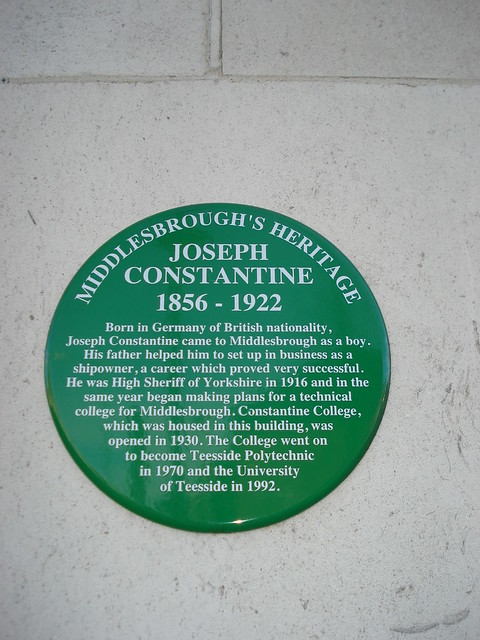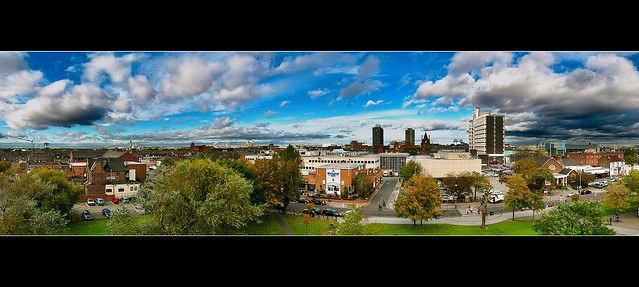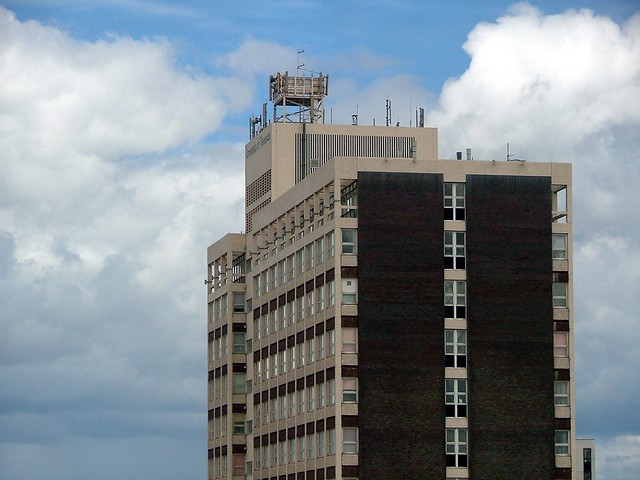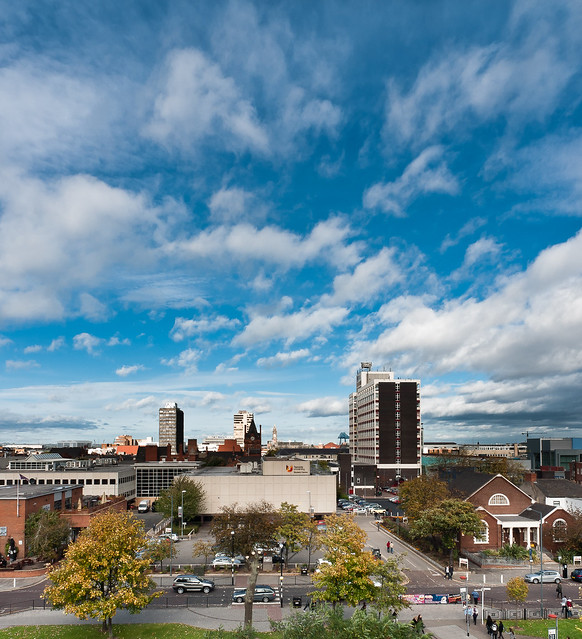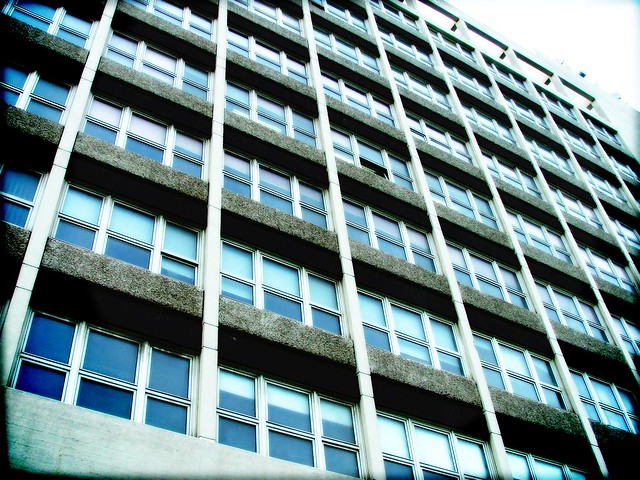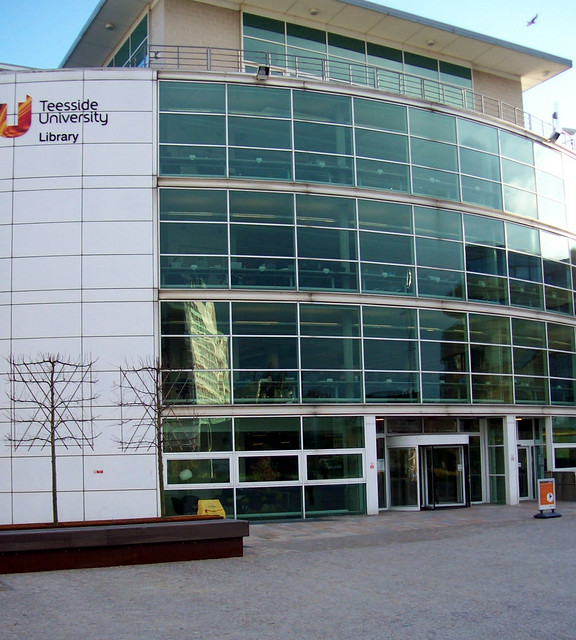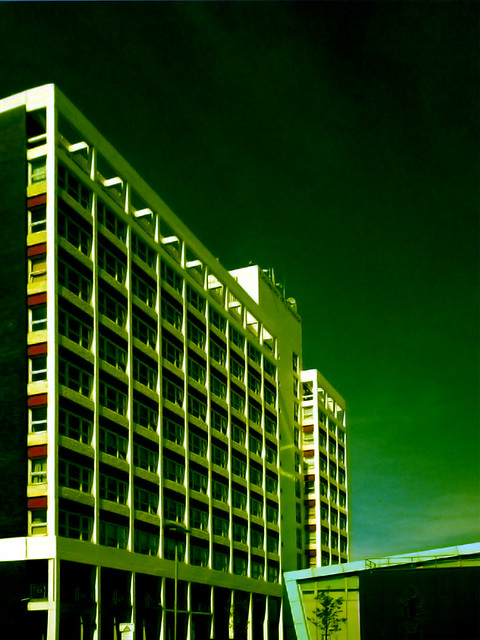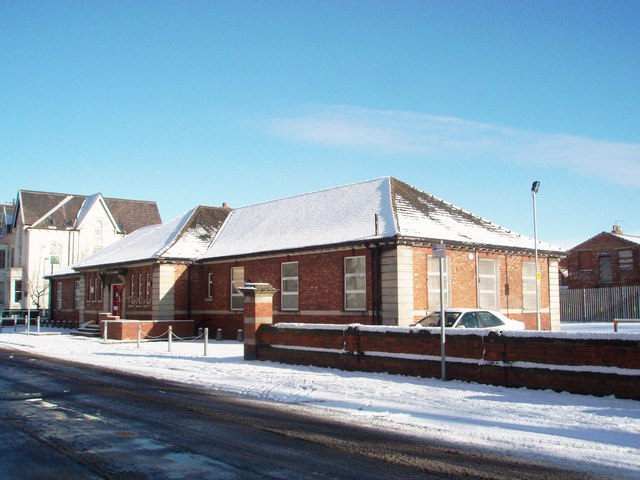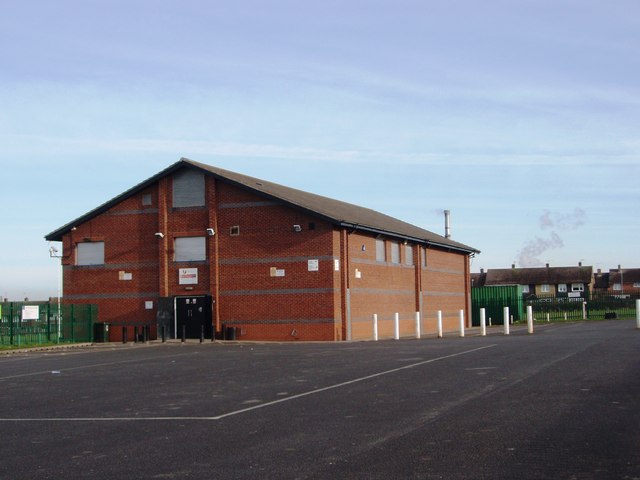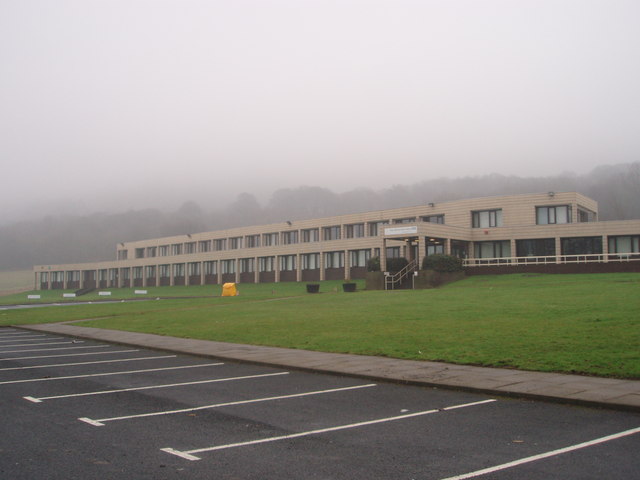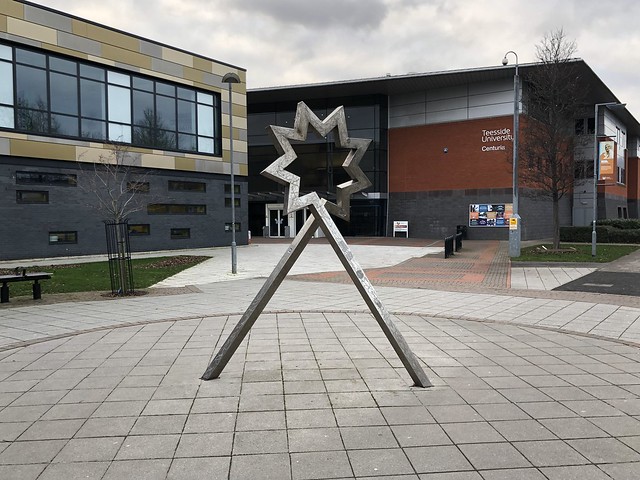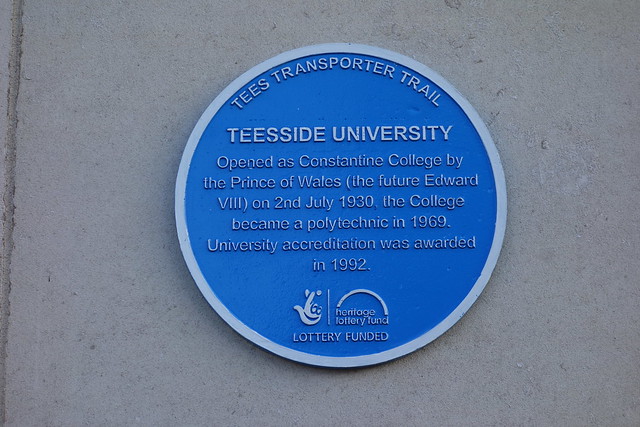Topics > Education > Universities > Teesside University
Teesside University
| Building/Place | Year Built | Notes |
| Athena Building | ||
| Aurora Building | ||
| Brittan Building | ||
| Campus Heart | ||
| Centre House | ||
| Centuria Building | 2000 | (Centura South, opened 2010) |
| Clarendon Building | 1973 | |
| Constantine Building | 1930 | Grade II listed building |
| Cook Building | ||
| East Parkside Village | Accommodation | |
| Education House | ||
| Europa Building | ||
| Foster Building | ||
| Greig Building | ||
| King Edward’s Square | Accommodation | |
| Mercuria Building | ||
| Middlesbrough Tower | 1963 | |
| MIMA | 2007 | Middlesbrough Institute of Modern Art |
| Olympia Building | 2004 | |
| Orion Building | ||
| Phoenix Building | ||
| Stephenson Building | 1976 | |
| Student Centre | ||
| Students' Union | ||
| Teesside Central Halls | Accommodation | |
| The Curve | ||
| University House | ||
| Victoria Building | 1892 | Grade II listed building. Originally built as a school |
| Waterhouse Building | 1877 | Grade II listed building. Originally built as a high school |
| West Parkside Village | Accommodation |
Teesside University is a public university with its main campus in Middlesbrough, Teesside in North East England. It has 18,576 students, according to the 2015/16 HESA student record.
History and development
A shortage of funding long proved a barrier to developing the Middlesbrough-based Mechanics' Institute of 1844. With the required funding, the College's launch could have come as early as 1914. Even after the donation of £40,000 to build the college from local shipping magnate Joseph Constantine in 1916, progress was slow. A Governing Council took place in 1922, followed by a doubling of the original financial offer by the Constantine family in 1924. For the task of constructing the first technical college building, Graham R. Dawbarn (a London architect also responsible for additions to Corpus Christi College, Cambridge) was appointed on 29 March 1926. Building work began in 1927, culminating in the beginning of enrolment and teaching on 16 September 1929.
Constantine Technical College was formally opened on 2 July 1930 by the future King Edward VIII, the Prince of Wales. Although not yet a university, Constantine was a further and higher education college from the onset. Students at Constantine could be as young as 15. Degree courses, published in the College's prospectus were validated by the University of London. Disciplines included metallurgy, engineering and chemistry. Five rooms were also reserved for an art department, until cramped accommodation forced the School of Art to split from its parent site for the 1950s.
The 1960s were years of sweeping change – as well as political sting – for the still comparatively fledgling College. By the end of the decade the first two "Teesside University" campaigns had begun: the first, from the early 1960s to 1966, and the second, from 1967 to 1972. Spates of enthusiasm were killed off on each occasion by the scepticism of then-Minister of Education, Anthony Crosland, and Margaret Thatcher's defining White Paper, respectively. The latter effectively shelved plans for the erection of any new institution in the United Kingdom, until the 1980s at least.
On campus, one of the most visible major developments for the College was an extension in 1963 which featured an 11-storey "skyscraper" . The College also acquired the neighbouring former High School of 1877. The College briefly restyled itself as Constantine College of Technology, before becoming Teesside Polytechnic (Britain's 13th Polytechnic) in 1969. At that point, the institution ran seventeen degree courses.
A merger with Teesside College of Education took place in the 1970s along with the purchase of Flatts Lane. The Clarendon Building was added in 1973, as was the Stephenson Building in 1976. Both of these buildings remained in use for the Polytechnic's long-awaited conversion into a university. That happened on 16 June 1992, when Teesside Polytechnic became the University of Teesside, one of the UK's first new universities following that year's Further and Higher Education Act.
By the 1990s, the institution had almost 8,000 students. In 1997 the old Polytechnic's library was replaced with a Learning Resource Centre. Subsequent additions included the Virtual Reality Centre and Centre for Enterprise, and later, the Phoenix and Athena Buildings. Today, historic structures such as the old High School (the Waterhouse building), the Constantine building and Victoria Building of 1891 (a schoolyard-equipped Victorian school, housing a series of graduate business incubator units), are all Grade II listed buildings.
In 2009, the University of Teesside changed its name to "Teesside University". It also changed its logo and adopted the motto "Inspiring success" as part of a £20,000 rebrand. Alternative names included "Middlesbrough University" and "Tees Valley University".
On 15 October 2009, Teesside was named University of the Year and awarded Outstanding Employer Engagement Initiative in the Times Higher Education Awards.
In 2010, the £17m Centuria South building for dental training and sports therapy was opened. This continues to provide specialist facilities.
A major phase of development known as campus heart began in 2014. This £22m landmark development created a central focus to the Middlesbrough campus. It also brought the iconic building, The Curve, a new £20m teaching building. As part of this £280m investment period, a "living wall" was created around a giant plasma screen on the side of the University's Student Centre.
In September 2017, the University unveiled a £300m campus masterplan set to transform its campus across the following decade.
The University was awarded a Queen's Anniversary Prize (2014–18) for outstanding work in the field of enterprise and business engagement. In 2017 Teesside University was named as the top North-East university for graduates securing professional and managerial level jobs (Destinations of Leavers from Higher Education survey 2015-16).
In 2017, Teesside University was awarded a Silver rating in the government’s new Teaching Excellence Framework.
Recently, several professors at Teesside University in the UK have been told they must reapply for their positions over the summer or face redundancy. The university says the purpose of this is to bring all university professors under the same job title by creating a new position, rather than to save costs. Higher education policy watchers warned that this decision is part of a trend of casualising university employees.
Campuses
Since its formation as Constantine Technical College in 1930, Teesside University has been located in the borough of Middlesbrough in the North Yorkshire area of England on the south banks of the River Tees. Transport links exist through the A19 and A66 roads. The University's main entrance is at the site of the old Constantine College building, fronted by the Waterhouse clock tower.
The University opened its original Darlington campus in the former Eastbourne Secondary School in the Eastbourne area of Darlington. A new £13m Darlington campus opened in 2011 at Central Park. Today the Darlington campus is known as The Forge and is the university's central business hub. Each year, the University works with hundreds of different companies providing research and innovation, consultancy, knowledge exchange, start-up incubation and mentoring and graduate placement.
Campus heart is the latest phase of investment in the Middlesbrough campus and has seen £30m of development in total. This development began in 2014 and includes the £20m building, The Curve which has a 200-seat lecture theatre and of teaching and learning space. It sits within a pedestrianised and landscaped area which is seen as a focal point to the campus.
In 2015, £6m was invested in the refurbishment and extension of the University's Orion Building – this includes a three-storey glass extension to house new, industry-standard equipment. It was announced in August 2015, that a further £2.5m is to be invested in the award-winning Students' Union, and £2m on campus catering facilities. The library is also expected to see a £5m investment.
A new £2.5m health and fitness centre opened at Teesside University's Middlesbrough campus in January 2016. The building features fitness and free weights areas, a sprint track, multi-purpose studios and a sauna. A range of fitness classes are available for staff and students.
£300m is set to be spent on the University's campus between 2017-2027.
Accommodation
Teesside University provides accommodation in self-catered rooms which are mostly reserved for first year undergraduate students. Accommodation is also available for international students, postgraduates, staff and undergraduates. All accommodation options are within walking distance of the main Middlesbrough campus. International students are encouraged to apply before 1 April to guarantee a place in University-managed accommodation.
The University has a range of managed residences (halls, houses and flats). Further places are available through the university managed housing scheme (properties owned by private landlords but managed by the University).
In 2015, the university acquired Teesside Central, adding 75 en-suite apartments to its accommodation portfolio. This accommodation is known as Central Halls.
Organisation
Schools
The University consists of the following academic Schools:
- School of Computing, Media & The Arts
- School of Health & Social Care
- School of Science, Engineering & Design
- School of Social Sciences, Humanities & Law
- Teesside University Business School
mima
Middlesbrough Institute of Modern Art, or mima, is a contemporary art gallery in the centre of Middlesbrough. It is run in partnership with Teesside University.
Academic profile
Teesside University has won seven National Teaching Fellowships.
The Quality Assurance Agency expressed confidence in the management of the institution's academic standards and quality of learning opportunities.
In the National Student Survey 2015, Teesside University scored 86% for overall satisfaction (up from 85% in 2014). The percentage of students who would recommend Teesside University to others grew to 89% (from 87%). The Students' Union continues to score highly at 85% (up from 82% in 2014). This is above the national average of 69%. English studies was given a 100% satisfaction rate (maintaining this rating from 2014), chemical engineering also scored highly at 96%. Civil engineering and fine art came in at 95% with law just behind at 94%. Nursing retained its 92% satisfaction rating from 2014. Drama received a 91% rating and academic studies in education 90%.
The Vice-Chancellor is Professor Paul Croney, who took up the position in May 2015 when Professor Graham Henderson retired. In April 2005, the University welcomed Lord Sawyer as its Chancellor, succeeding the University's first ever Chancellor, European Commissioner Leon Brittan.
The University's School of Computing hosts the annual Animex International Festival of Animation and Computer Games. This complements the University's provision of computing programmes and its coverage of animation and computer games study.
As of 2017, the university still offers certification in alternative medicine despite previous strong criticism from campaigners for evidence-based medicine such as Simon Singh and Edzard Ernst, in their 2008 book Trick or Treatment?. The university was criticised for offering degree courses in pseudoscientific subjects and for bestowing a visiting professorship on "nutritionist" Patrick Holford, a proponent of the disproven link between the MMR vaccine and autism, who has made misleading claims that conventional HIV treatments are less effective than Vitamin C.
Research
Teesside University's research is focused on addressing five thematic areas known as the Grand Challenges
In research, the university offers an array of relevant routes of study resulting in the qualification of MPhil, PhD, MProf and DProf. The strongest research profiles, according to the 2008 Research Assessment Exercise, were in Computing and History, with Business & Management Studies and Sociology also producing work of international excellence.
Students' Union
The Students' Union is led by students for students with four current students elected by the student body to hold the positions of President, VP Education, VP Activities and VP Welfare in March of each year. They take their posts from July to the end of June each year and have the option to seek re-election for a second and final term if they wish.
The current student officer team will hold their posts until July 2018 and currently consists of Thomas Platt (VP Education), Amy Preston (VP Activities) and Georgina Arksey (VP Welfare).
As the officer trustees they sit on a wider board of trustees who oversee the running of the Students' Union which also includes external trustees drawn from the worlds of local government, business, charity and the public sector.
The Students' Union has won numerous accolades; it was named Students' Union of the Year at the BEDA (Bar Entertainment and Dance Association) Awards in 2004 and Club Mirror Students' Union of the Year in 2002, as well as finishing runner-up in the latter award in 2007. In 2002/2003, the Students' Union also won the Sport England Volunteer Investment Programme Award, while the Union's bar, The Terrace Bar, was awarded Best Bar None status in 2006 and 2008, overcoming competition from universities from across the two regions of the North East and Yorkshire before going on to win four Best Bar None Middlesbrough Awards 2009 recognising outstanding standards of staff training and strong focus on the safety of customers. The Students' Union also won the 2007 It's Not Funny competition, winning a live comedy performance featuring Bill Bailey, Marcus Brigstocke, Andrew Maxwell and Simon Amstell. More recently the SU was shortlisted for NUS Students' Union Of The Year in 2014, secured the AQS accreditation for the SU Link and gold in the National Best Bar None Awards 2015 recognising exceptional standards in its social spaces The Terrace and The Hub.
Alongside multi-award-winning social spaces and venues, the Students' Union has support services for students as part of the SU Link which provides help with welfare, academic, financial and personal issues. It also advertises a range of part-time jobs. Students are encouraged to get involved in their Students' Union in a variety of ways. There are over 40 clubs and over 20 societies and students are able to set up their own clubs and societies if their interests aren't covered. SU Activities helps students to do this and also provides opportunities to get involved in charity work such as Raise and Give (RAG).
From 2014 the Students' Union has received an investment of over £8.5m to refurbish its building and facilities.
In the National Student Survey 2015, the Students' Union score highly at 85% satisfaction (up from 82% in 2014). The national average is 69%. Teesside's Students' Union won the Gold Award in the 2016 Best Bar None awards.
Cancelled film screening
Conservative Party candidate and filmmaker John Walsh made a film of the 2010 General Election entitled ToryBoy The Movie in 2011. The film's re-release in 2015 caused controversy after it was not shown at Teesside University. According to the film-maker, the film was booked by the Student Union, but at the last minute the screening was abruptly halted. The Student Union said the booking was never confirmed but failed to explain why they had produced a flyer for the event giving day, date, time and location details of the screening and Q&A. It was agreed to take place on Tuesday 28th April 2015 at 6.30pm at the Student Union Building on the 2nd floor.
Notable people
Principals of Constantine Technical College
- Douglas Heber Ingall (1928–1930)
- T. J. Murray (1931–1936)
- H. V. Field (1936–1947)
- S. A. R. Clark (1947–1955)
- G. S. Atkinson (1955–1961)
- J. Houghton (1961–1969)
Directors of Teesside Polytechnic
- J. Houghton (1969–1978)
- M. D. Longfield (1979–1992)
Chancellors of Teesside University
- Leon Brittan, Baron Brittan of Spennithorne (1993–2005)
- Tom Sawyer, Baron Sawyer of Darlington (2005–2017)
- Paul Drechsler CBE (2017– )
Notable staff
- Philippa Gregory, novelist
- Gervase Phinn, Visiting Professor of Education
- Anthony James Pollard, medieval historian
- Chris Stevenson, author and currently professor of mental health nursing at Dublin City University
Notable alumni
- Main category: Alumni of Teesside University
- Ernest W. Adams (1960–), video game design consultant. (PhD in 2013 in computing and mathematics.)
- Ajaz Akhtar (1968–), Cambridgeshire cricketer
- Vera Baird QC, former Member of Parliament for Redcar and former Solicitor General for England and Wales (MA in Local History in c.2004)[35]
- Tom Blenkinsop, Member of Parliament for Middlesbrough South and East Cleveland
- David Bowe, former Labour Member of the European Parliament (Diploma in Management Studies in 1988)
- Elizabeth Carling, MA in acting, Honorary Graduate 2000
- Brendan Cleary, poet (c.1980)
- Jamie Dornan, model, musician and actor
- Deborah Dyer or "Skin", lead singer of Skunk Anansie (BA (Hons) Interior Design in 1992)
- David W. Eka, first stake president of The Church of Jesus Christ of Latter-day Saints in West Africa
- Ben Everson, English footballer
- Antony Gormley OBE, sculptor, was awarded an honorary Doctorate of Letters in 2004
- Ray Mallon, directly-elected Mayor of Middlesbrough (Diploma in Management Studies in 1992)
- Paul Marsden, Former Labour and Liberal Democrat Member of Parliament for Shrewsbury and Atcham (studied from 1986 to 1990)
- Chris Newton, silver medal-winning cyclist at the 2004 Athens Olympic Games
- Stephen Uppal, actor in Hollyoaks (BA (Hons) English Studies in 2002)[36]
- Nicole Westmarland, Professor of Criminology at Durham University
Visit the page: Teesside University for references and further details. You can contribute to this article on Wikipedia.

from http://www.tees.ac.uk/
Teesside University
- Official Website of the University
Added by
Simon Cotterill

Co-Curate Page
Tees Valley
- Billingham Guisborough Hartlepool Kirkleatham Linthorpe Middlesbrough Redcar Saltburn by the Sea Stockton-on-Tees Yarm Borough of Darlington Archdeacon Newton, Barmpton, Beaumont Hill, Bishopton, Blackwell, Brafferton, Coatham Mundeville, Darlington, Denton, Elstob, Great Burdon, Great Stainton, Haughton-le-Skerne, Heighington, High Coniscliffe, Houghton Bank, Houghton-le-Side, Hurworth-on-Tees, Hurworth …
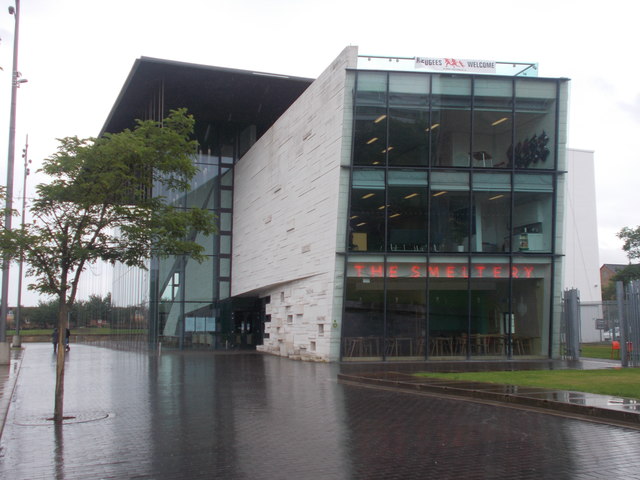
Co-Curate Page
Middlesbrough Institute of Modern Art
- Overview About MIMA Map MIMA: Middlesbrough Institute Of Modern Art; Centre Square, Middlesbrough TS1 2AZ MIMA is a contemporary art gallery based in the centre of Middlesbrough, opened 27th January 2007. …

from https://commons.wikimedia.org…
Campus, front entrance, Waterhouse Building, gates, night, gateway
- Photo by 'LTees', 29th October 2013. Available for reuse under a Creative Commons Attribution-Share Alike 4.0 International license, c/o Wikimedia Commons.
Added by
Simon Cotterill

from https://www.tees.ac.uk/minisi…
History of Teesside University
- "...Originally founded as Constantine College, the institution was officially opened by the Prince of Wales, the future King Edward VIII, on 2 July 1930. The college became a polytechnic in …
Added by
Simon Cotterill


from http://www.tees.ac.uk/
Teesside University
- Official Website of the University
Added by
Simon Cotterill

Co-Curate Page
Tees Valley
- Billingham Guisborough Hartlepool Kirkleatham Linthorpe Middlesbrough Redcar Saltburn by the Sea Stockton-on-Tees Yarm Borough of Darlington Archdeacon Newton, Barmpton, Beaumont Hill, Bishopton, Blackwell, Brafferton, Coatham Mundeville, Darlington, Denton, Elstob, Great Burdon, Great Stainton, Haughton-le-Skerne, Heighington, High Coniscliffe, Houghton Bank, Houghton-le-Side, Hurworth-on-Tees, Hurworth …

Co-Curate Page
Middlesbrough Institute of Modern Art
- Overview About MIMA Map MIMA: Middlesbrough Institute Of Modern Art; Centre Square, Middlesbrough TS1 2AZ MIMA is a contemporary art gallery based in the centre of Middlesbrough, opened 27th January 2007. …

from https://commons.wikimedia.org…
Campus, front entrance, Waterhouse Building, gates, night, gateway
- Photo by 'LTees', 29th October 2013. Available for reuse under a Creative Commons Attribution-Share Alike 4.0 International license, c/o Wikimedia Commons.
Added by
Simon Cotterill

from https://www.tees.ac.uk/minisi…
History of Teesside University
- "...Originally founded as Constantine College, the institution was officially opened by the Prince of Wales, the future King Edward VIII, on 2 July 1930. The college became a polytechnic in …
Added by
Simon Cotterill
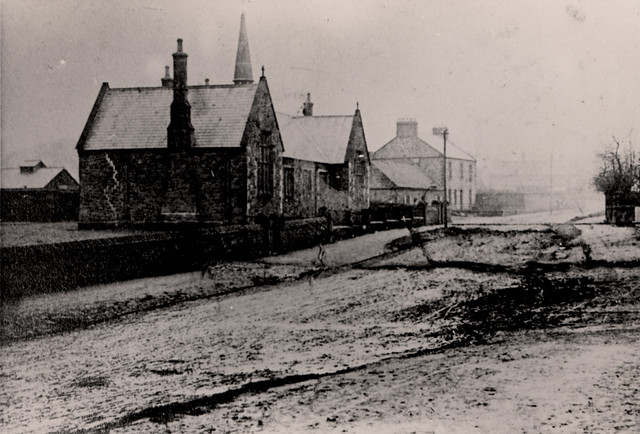
Education

Universities

Campus Heart, Teesside University

Central Halls, Teesside University

Constantine Building, Teesside University

King Edwards Square, Teesside University
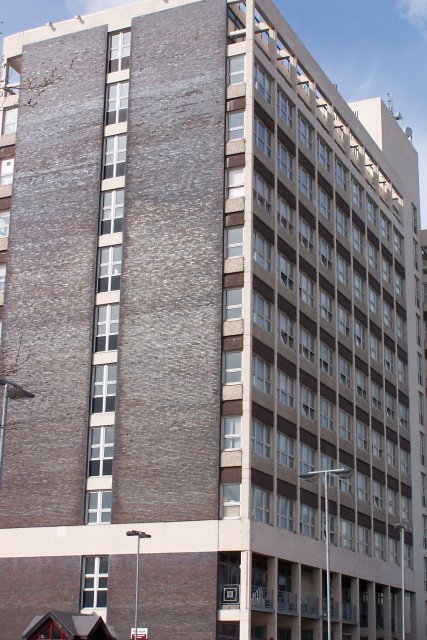
Middlesbrough Tower, Teesside University

Orion Building, Teesside University

Stephenson Building, Teesside University

The Curve, Teesside University

Victoria Building, Teesside University
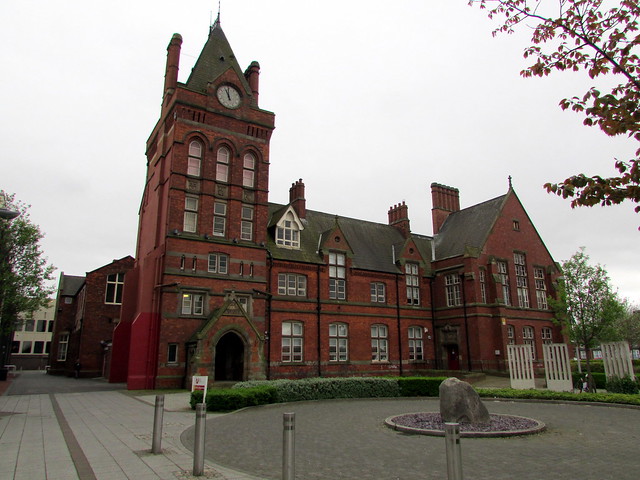
Waterhouse Building, Teesside University
